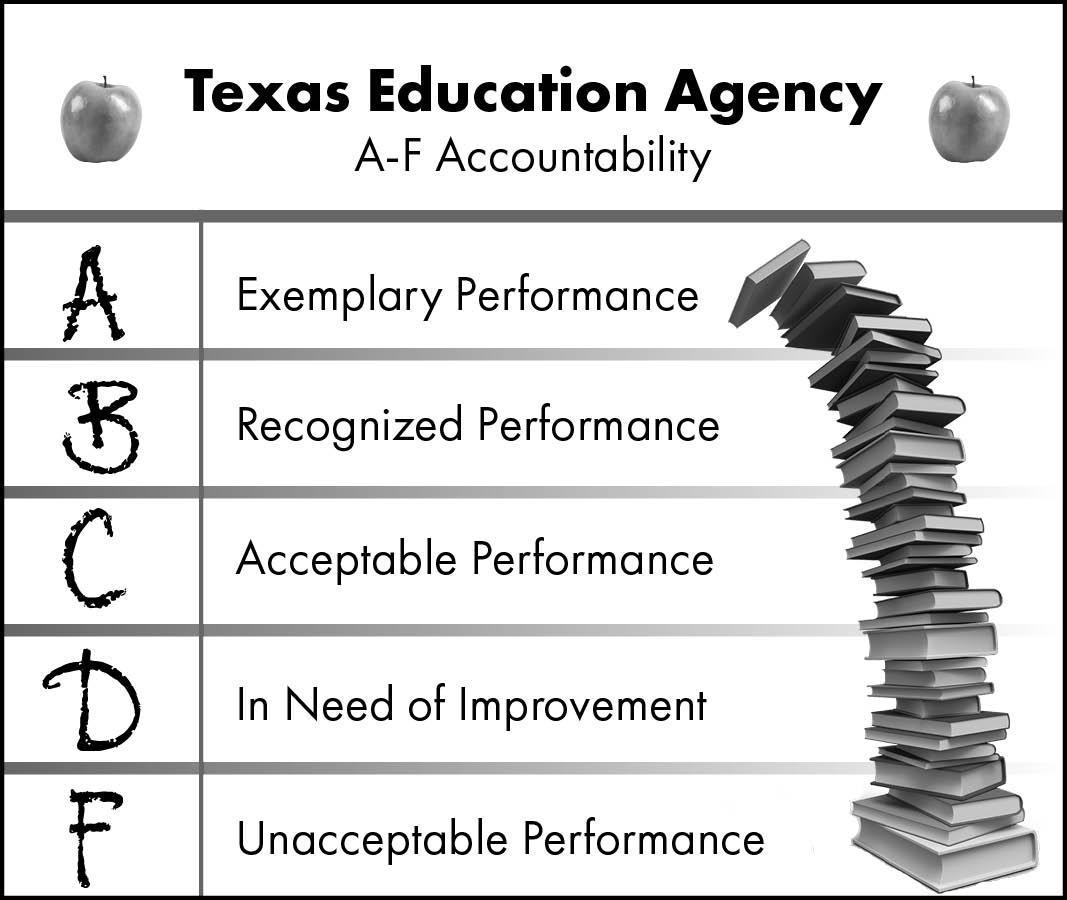
Daily Record Graphic by Colton Ashabranner
District preparing for A-F standard
In just a little less than a month, the Texas Education Agency’s new accountability system takes effect, bringing what could be some drastic changes.
Dee Casey from Moak Casey and Associates, a firm specializing in school finance and accountability, gave a presentation on the A-F accountability system to the SMCISD board of trustees Monday night.
“It’s quite a bit different from all the other systems we’ve been under,” Casey said.
The A-F accountability ratings will replace the current rating system that rates all districts and campuses as either “met standard” or “improvement required.” Starting Aug. 15, districts will be given A-F letter grades. Campuses will receive letter grades starting in 2019, according to the state.
Casey said that in 2017, almost every district in the state met standard; only about 44 did not. She said the Texas Education Agency (TEA) expects that to change. A map showing potential district ratings based on the A-F system resembled a patchwork quilt with no dominant color representing any particular rating.
“It will look quite a bit different,” Casey said of the accountability landscape.
Moreover, she said, in 2017, almost every campus in the state achieved the “met standard” rating.
“About 90 percent of 8,800 campuses met standard,” she said. “The campuses that tend to get a lot of attention are the 358 Improvement Required campuses.”
In February, Casey told the trustees, TEA ran its model and has predicted a rather different outcome for Texas campuses.
“They believe about 1,700 campuses will be rated a D or an F,” she said. “... That is a significant shift in how we rate our campuses.”
Most of those campuses — 1,233, based on the TEA’s prediction — will receive Ds, but 538 are expected to receive Fs.
Casey explained the factors that will go into the new letter grades. Accountability rests on three domains: student achievement, school progress and closing the gaps. For elementary and middle schools, student achievement will be measured entirely using STAAR test scores. For high schools and districts, STAAR scores will account for 40 percent of student achievement, with graduation rates accounting for 20 percent and college, career and military readiness accounting for 40 percent.
School progress measures academic growth from grade to grade and relative performance — how students achieve compared to districts or campuses with similar socioeconomic circumstances.
“Basically it’s taking into account poverty and how poverty impacts performance,” Casey said.
In determining accountability ratings, TEA will use the higher of either school progress or relative performance.
The third domain, closing the gaps, compares different student population groups and how close they are to meeting a target. Examples of different student groups are African-American, Hispanic, White, American Indian, Asian or Pacific Islander students, students who are multiracial, economically disadvantaged students, current and former special education students, and current and monitored English learners. Casey said that at a large, diverse elementary school, there could be 72 targets to meet.
“The commissioner (of education) has been very intentional in his efforts to align state and federal accountability,” Casey said. “... There are lots of student groups, lots of components, but again, it’s where state and federal accountability are aligned.”
Casey noted that the third domain does not compare one student group to another; it compares all student groups to their achievement targets. Those include factors like academic achievement in mathematics, graduation rates, English language proficiency and STAAR performance.











